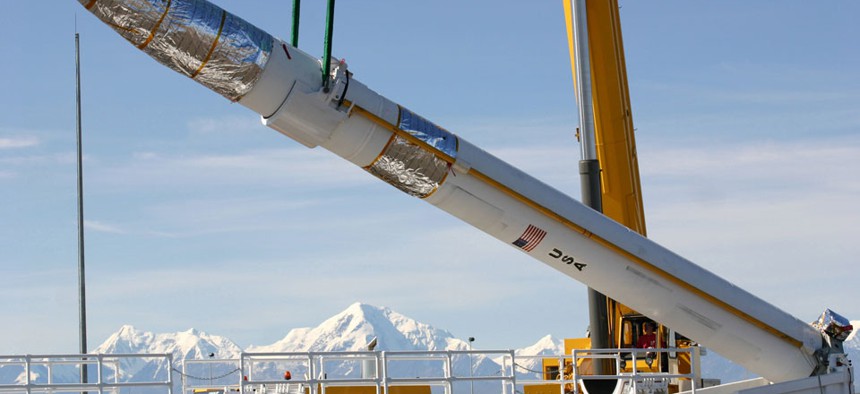Pentagon Aims to Boost Accuracy of Ballistic Missile Defenses

A ground-based missile interceptor is lowered into its missile silo during a recent emplacement at the Missile Defense Complex at Fort Greely, Alaska. Defense Department file photo
New investments would give missile defenses 'a high degree of confidence.'
The Pentagon’s fiscal 2015 budget request funds new projects aimed at making U.S. ballistic missile defenses more accurate and reliable, a senior official said.
One of three such initiatives is redesigning the pivotal Ground Based Interceptor’s Exoatmospheric Kill Vehicle, to the tune of $100 million in the upcoming fiscal year and $738 million through fiscal 2019. The project is part of the Missile Defense Agency’s $7.46 billion budget request, unveiled on Tuesday.
Plans to redesign the problem-plagued kill vehicle follow a “longstanding need” for greater reliability of the system, as evidenced by several intercept test failures over the past few years, Missile Defense Agency Director Vice Adm. James Syring told reporters.
The other related initiatives are development of a long-range discriminating radar for watching over the Pacific -- possibly from a location in Alaska -- and “discrimination improvements” for boosting existing homeland defenses, Syring said.
Mounted atop the Ground Based Interceptor, the kill vehicle is designed to slam into incoming missiles while in space and keep them from hitting U.S. targets.
The term "discrimination" in missile defense generally refers to an interceptor’s ability to identify and engage individual targets. Sophisticated ballistic missile attacks can include false warheads or other obscurants meant to confuse defensive systems. To succeed in knocking out incoming attacks, interceptors also need an ability to identify and pursue targets through any debris created by previous shots.
The new radar is budgeted at $80 million in fiscal 2015, which begins Oct. 1, and at $940 million through the end of the five-year program plan, according to an agency spokesman. Officials want $122 million for discrimination improvements in the next fiscal year and a total of $198 million through 2018.
The new investments would yield a ballistic missile defense architecture “capable of discriminating and killing a re-entry vehicle with a high degree of confidence,” Syring said. The language notably sets the bar higher for successful performance than in recent years, when officials instead stressed that the multibillion-dollar system should be expected to offer only limited capability. They attributed shortcomings to a decision more than 10 years ago to field a missile defense program in haste.
Michael Gilmore, the Pentagon’s chief weapons tester, wrote in an annual overview of weapon programs in January that the failed tests "raise questions regarding the robustness of the EKV's design” and recommended a retooling.
Exactly how the acquisition of a new kill vehicle would unfold, and whether current contractor Raytheon would get the business, is still an open question, Reuters reported on Tuesday.
Meanwhile, U.S. officials are sticking by plans to field 14 additional Ground-Based Interceptors at Fort Greely, Alaska, bringing the total number of deployed systems to 44 by 2017. The additional deployments, expected to cost $1 billion, are “unaffected” by the planned kill-vehicle redesign, according to Syring.



